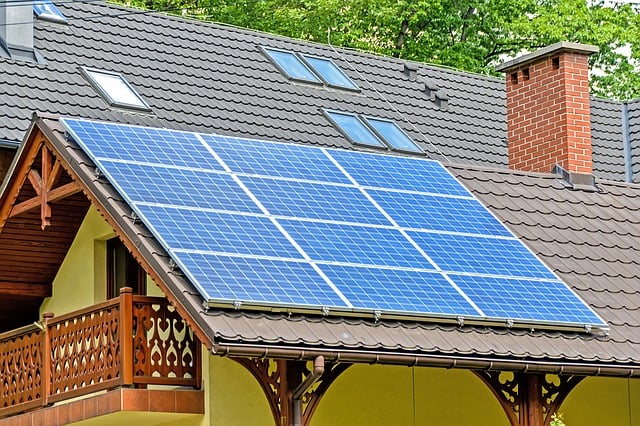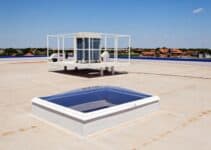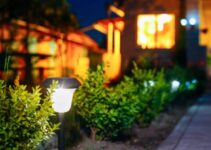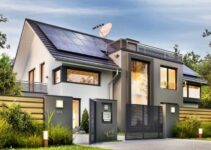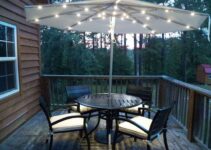Ten years ago there were just 9,183 megawatts of solar energy installed across the United States. Today that number has nearly tripled, with more than 27.2 gigawatts of solar installations dotting America’s rooftops and landscapes. Even though solar installations have surpassed one million this past year, there is still a long, daunting road ahead until the US economy is self sustaining.
According to research done by the Princeton-based Carbon Mitigation Initiative, if we have any hope of offsetting carbon emissions in the next 50 years, the world’s solar capacity would have to increase 100-fold. On a smaller scale, closer to home, the U.S. would need to install 737 gigawatts by 2050 in order to address the climate crisis. In other words, our nation’s solar capacity would have to undergo a 1,000 percent increase over the next 14 years.
Even though energy experts like Cédric Philibert, from the International Energy Agency, believe this goal is both realistic and achievable, and even if you are passionate about going green, private solar installations aren’t always the best decision for everyone. In this article we will explore four large factors to consider when deciding if solar power is the right choice for you. From pricing and off-set costs to location and incentives, these tips will help you to choose the best energy option possible.
One: Cost of Solar Power
In 1977, the average cost of solar cells was a bank-breaking $76.67 per watt. At $0.26 per watt, today’s solar cells cost nearly 300-percent less – making solar remarkably more affordable for both private and public installations. Despite the fact that solar prices will continue to decline to unprecedented lows, cost is still one of the biggest factors influencing solar installation. As of early 2016, homeowners were paying approximately $3.75 per watt to install a solar panel system. With the average PV system sizing in at 5000 watts, the standard cost for solar installation ran around $12,500 (after the Federal ITC discount).
For most homeowners, this project would be considered a major investment. There are, however, several financing options and incentives that help to make solar installations more attainable.
- Leasing plans: A leasing plan means signing a power purchase agreement (PPA) in which a third party, typically the solar provider, owns the solar panel system. Leasing plans impact the cost, maintenance, terms, financial offsets and savings/returns on the investment of your solar system, but is a great option if you’re more interested in the electricity and environmental advantages more than the financial benefits. Leasing is also recommended if you want to avoid the responsibility of maintaining or repairing your system or if you don’t want to wait a full year before receiving the financial benefits of tax credits.
- Solar loans: Similar to home improvement loans, a solar loan is borrowed money from a lender that you agree to pay back, plus interest, in monthly installments over the loan term. Loans are a good option if you want to maximize the financial benefits of installing a solar panel system, rather than just reaping environmental benefits. It’s also a good option if you are eligible to reduce federal and state tax liabilities or if you want to increase the market value of your home.
- Federal and local subsidies: The US federal renewable-energy tax credit is a 30-percent tax credit for solar systems on both residential and commercial properties, while additional state and local incentives help to further reduce the price of solar installation. For example, with the federal tax credit, a $21,400 system would end up costing you around $15,000 and local credits would make it cost even less. If you’re able to save $1,500 a year on your electric bill, you’ll pay off your investment in 10 years of less.
Two: Location, Location, Location
Contrary to common belief, you don’t have to live in a place where the sun shines 365 days a year to reap the benefits of solar installation. The amount of money you save on your yearly utility bill depends largely on two factors: your electricity rates and the available solar rebates and incentives in your area. Therefore, the sunniest places in the country don’t always offer the greatest savings from solar. In fact, many consumers in the Northeast can often have significantly higher savings from solar power than those in sunny states like Florida. To better understand this, it’s helpful to know just how a solar panel system works.
- Photovoltaic (PV) cells, or the specialized semiconductor diodes that are connected together to make up the actual solar panel, convert variable light into direct currents (DC).
- The inverter converts the DC output of the PV solar panels into a utility frequency alternating current (AC). In simpler terms, the inverter is responsible for converting daylight into electricity.
- The electrical panel then sends this power to the lights and appliances throughout your home.
- The utility meter measures the energy you generate and feed back into the grid.
Because solar panels use energy from daylight, as opposed to sunlight, panels don’t need direct sunlight in order to work. Therefore, even if you live in places like Portland, Oregon or San Francisco, California, where there’s frequently foggy, cloudy weather, you can still benefit from solar installations. In fact, areas with slightly cooler weather than average are advantageous for solar panels because the panel’s electrons don’t overheat.
Three: A Reliable Roof
One of the greatest advantages of solar panels is that they can be easily installed on most roofs. However, to determine if your roof is suitable for solar, take a look at the following:
- Direction of the roof: Roofs facing south are ideal for solar because they are able to generate the most power over the course of the day. Though panels on an east- or west-facing roofs can still produce enough energy to reduce your electricity bill, they will generally produce about 20 percent less electricity than if they were to face south.
- Pitch angle: Solar panels can be installed on roofs with a pitch between 15 and 40 degrees, with 30 degrees being the optimal angle. Even if your roof is flat, solar panels can be mounted and installed at an angle that will reap the biggest benefits.
- Size and shape: Large, square roofs are ideal for solar panel installation. When observing your roof, keep in mind that for every kilowatt of panels you wish to install, you’ll need about 100-square-feet of roof space. The average home system requires about 500-square-feet of space, though the system can be divided into smaller sections if need be.
- Shading and obstructions: As you can imagine, things like tall trees or nearby buildings that block the sun or cast a significant amount of shade on your roof can impact the amount of electricity your panels produce. Remember, though, that trees can always be trimmed back to enable more sunlight to reach your panels.
- Agel: The average solar panel system can last for more than 25 years, and the last thing you’ll want to do after installing solar panels is removing them to repair or replace your roof. So before you commit to installation, have a professional verify that your roof is in good, lasting condition and that it will be able to withstand the weight of a solar panel system.
- Material: Composite, wood, cement tile, slate, tar and gravel, and metal are most compatible roofing materials for solar panels. Though solar can be installed on slate, cedar, or clay tile roofs, experts recommend avoiding this as these materials are more prone to breakage during the installation process.
Four: Current Energy Efficiency
Lastly, before you commit to installing solar panels, ask yourself if you’re already being as energy efficient and environmentally minded as possible. Start by taking a look at your power bill and note how many kilowatt-hours (kw-hrs) you’re using a month. Try to reduce this number by implementing the acronym LAW: lights, appliances, and waste.
- Lights: Instead of using traditional bulbs, opt for compact fluorescent lights (CFLs) or LEDs. CFLs use about 80% less power than traditional bulbs and last significantly longer.
- Appliances: There are several small changes you can make to ensure you get the most out of your appliances. For starters, avoid having an empty refrigerator. Even if it’s not full of food, fill your fridge with water jugs (or fill old milk jugs with water) to improve the efficiency and retain a cool temperature. Only run the dishwasher, washing machine, and dryer when they are full and consider using a clothesline to dry your clothes. If you’re shopping for new appliances, spend the extra money for Energy Star performers, as these can save you a significant amount of money and offset the extra cost in a matter of months.
- Waste: Stop wasting energy by reducing television time, putting exterior lights on timers, being mindful of leaving lights on in empty rooms, and unplugging unused appliances like refrigerators and freezers. Depending on the season, adjust your thermostat to a degree above or below the average temperature, and even consider plugging all electronics into a powerstrip that can be turned off every night.
Remember that, along with helping you save money, the biggest reason to install solar panels is to help reduce our carbon footprint and support green-living. So even if solar power is the right choice for you, you should continue doing all you can to care for the environment.
